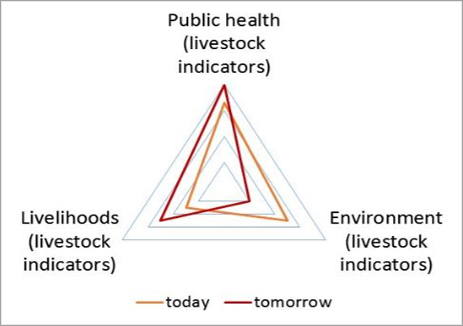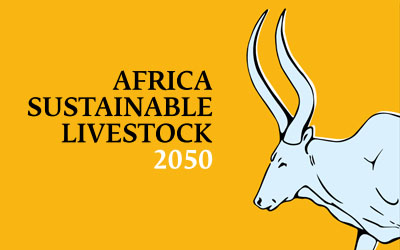The effects of these investments on people’s livelihoods, public health and the environment will be profound, as the large share of rural households depend on livestock for their livelihoods; approximately 75 percent of new emerging human infectious diseases are zoonotic; and livestock contribute about 14.5 percent to all human-induced greenhouse gas emissions.
The future of African livestock will thus influence the development trajectory of the African continent as whole.
ASL 2050 aims to facilitate dialogue and consultation among livestock, health and environment stakeholders with the objectives to identify opportunities and threats associated with the long-term development of livestock and to agree upon priority reforms and investments to build the capacity needed to ensure a sustainable development of the livestock sector in the coming decades. Such a development will improve people’s livelihoods, through the provision of income, food and employment; it will improve public health, through one-health investments that tackle the emergence and spread of zoonotic diseases and antimicrobial resistance; it will address environmental degradation and climate change, and sustain biodiversity.
ASL 2050 is forward-looking:
it is not about addressing short-time development constraints, but about anticipating prospective changes in the livestock sector in the next decades and identifying capacity gaps and needs for national and regional governments, and livestock stakeholders more in general, to effectively deal with accelerating change and uncertainty.
Initially, ASL 2050 will collaborate with six African governments, notably those of Burkina Faso, Egypt, Ethiopia, Kenya, Nigeria and Uganda, which are anticipated to experience major changes in their livestock systems in the years ahead.
ASL 2050 will facilitate dialogue and consultation among national and regional stakeholders to:
- Collect quantitative and qualitative information on current and future livestock systems and their effects on public health, livelihoods and the environment;
- Interpret data and information and formulate different versions of the future;
- Develop and agree upon strategic options for action that ensure a sustainable development of livestock in the coming decades;
- Identify capacity gaps and needs for national and regional governments to ensure a sustainable development of the livestock sector in the years ahead.
Project structure:

ASL 2050 impact:
Design and implement policies/investments now for sustainable development of livestock in the long term, taking into consideration:
- Public health (e.g. Zoonotic diseases, Animal source food diseases, AMR, impact on Public health and society)
- Environment (e.g. Impact on Air, Land, Water, biodiversity, other domains)
- Livelihoods (e.g. Economic losses, Loss of business, Change in quality and preferences)
ASL 2050 outcome:
Livestock stakeholders, including governments, have the capacity to assess:
- The long term dynamics of the livestock sector
- The potential impacts of the long term dynamics of livestock on public health, environment, and livelihoods
ASL 2050: output:
- Description of current livestock systems and their impact on society
- Description of future (2050) livestock systems
- Identification of challenges, policy gaps/options and capacity requirements to ensure healthy livestock systems in the long term

